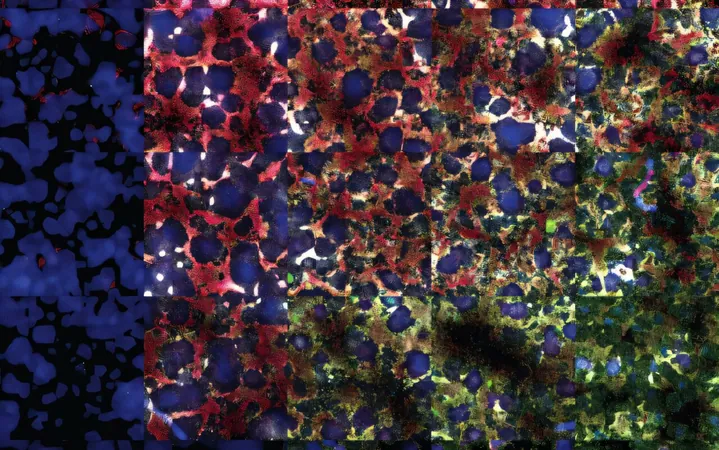
The Fascinating Journey of Stem Cells: How They Converge in Embryonic Development
2025-09-10
Author: Yu
Unraveling the Mysteries of Embryonic Cells
Have you ever puzzled over how tiny cells transform into complex organs like our lungs and gut? Recent groundbreaking research reveals that the early embryonic cells, known as endoderm cells, emerge from a myriad of converging developmental paths, shaking the foundations of previous beliefs about cell differentiation.
The Concept of Converging Paths in Development
Imagine planning a road trip where each route could lead you to the same destination. This intriguing analogy applies to the journey of embryonic cells as they evolve into specialized tissues. As Crick group leader Silvia Santos explains, during a crucial phase called gastrulation, embryos transition from a simple layer of cells into layered structures, spawning the building blocks of vital organs.
The Ongoing Debate on Cell Development
For years, scientists have debated the mechanisms behind the formation of germ layers— the foundational tissues leading to organs in our body. Two major theories have emerged: the traditional model advocates straight paths guided by signaling cues, while another posits a more flexible approach where cell identity can shift dynamically based on real-time conditions.
New Insights from Pioneering Research
In a revolutionary study published in *Developmental Cell*, Santos's team harnessed cutting-edge experimental techniques, including single-cell transcriptomics and live-cell imaging, to map out the actual paths taken by these stem cells. Their findings revealed that no single developmental route exists; instead, each theory offers valuable insights into the complex choreography of human development.
The Role of Signaling Molecules
The research further identified the pivotal roles of two signaling molecules—Activin and BMP4—which work together and sometimes in opposition to influence cell destiny. Lead researcher Ollie Inge noted, "We discovered crucial time windows when cells respond to these signals, much like a GPS choosing the best route based on real-time traffic." The concentration of BMP4 was found to be particularly significant in directing cells towards either direct endoderm specialization or navigating through a mesoderm stage.
Why Converging Paths Matter
A lingering question remains: why do cells have multiple routes to an identical fate, especially when certain paths seem simpler? Santos posits that the ability to converge may highlight the critical nature of this developmental stage, as errors during gastrulation can lead to pregnancy loss. Proper formation of the endoderm is essential for the development of internal organs, meaning these varied paths create a resilient framework for our growth.
A Leap Towards Regenerative Medicine
The significance of these early cell populations extends beyond embryonic development; efficiently deriving them in laboratory settings is viewed as the 'holy grail' of regenerative medicine, bringing researchers one step closer to profound medical breakthroughs.
While the study sheds light on the complexities of early development, it also raises new questions about the intricacies of cell fate. The journey of these stem cells continues to captivate scientists, promising more discoveries in the realm of biology and medicine.


 Brasil (PT)
Brasil (PT)
 Canada (EN)
Canada (EN)
 Chile (ES)
Chile (ES)
 Česko (CS)
Česko (CS)
 대한민국 (KO)
대한민국 (KO)
 España (ES)
España (ES)
 France (FR)
France (FR)
 Hong Kong (EN)
Hong Kong (EN)
 Italia (IT)
Italia (IT)
 日本 (JA)
日本 (JA)
 Magyarország (HU)
Magyarország (HU)
 Norge (NO)
Norge (NO)
 Polska (PL)
Polska (PL)
 Schweiz (DE)
Schweiz (DE)
 Singapore (EN)
Singapore (EN)
 Sverige (SV)
Sverige (SV)
 Suomi (FI)
Suomi (FI)
 Türkiye (TR)
Türkiye (TR)
 الإمارات العربية المتحدة (AR)
الإمارات العربية المتحدة (AR)